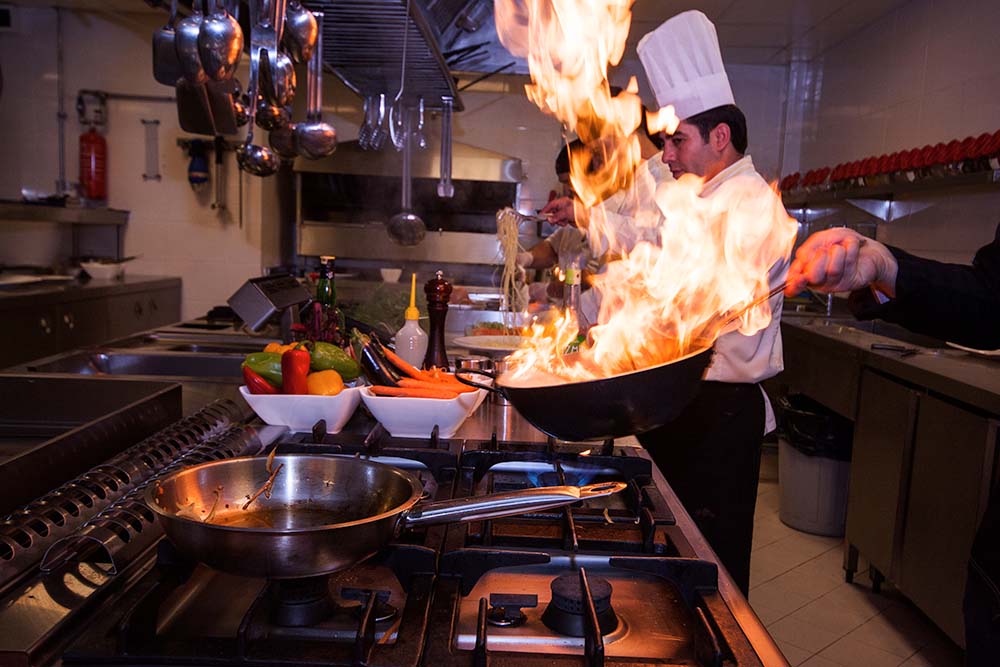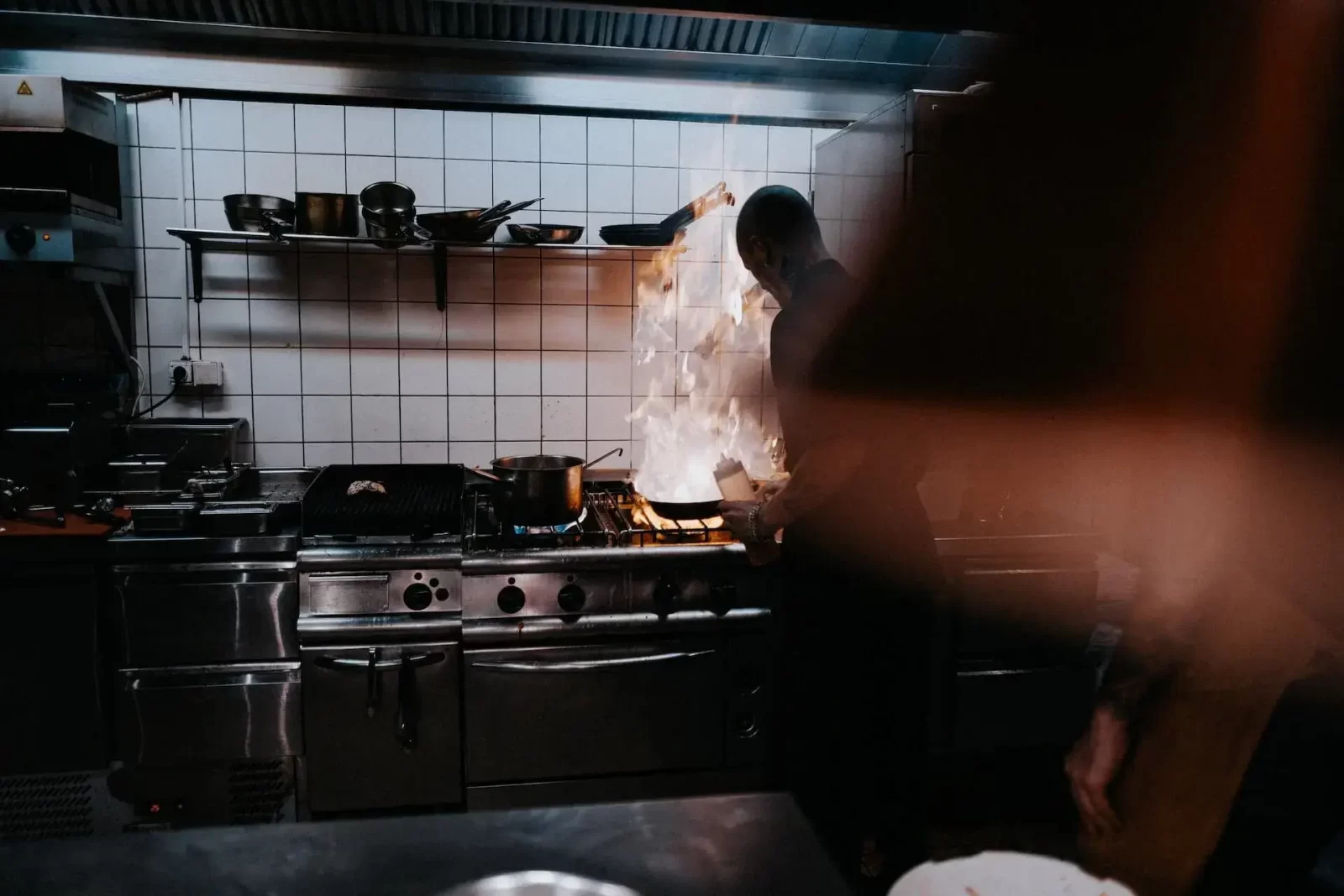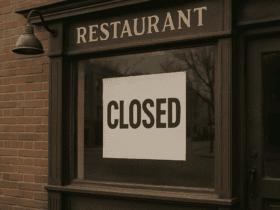The phrase “Ghost Kitchen” does in fact spiral images of haunted houses and spirits. However, the reality of it is completely different. A ghost kitchen is essentially a restaurant that does not have dine-in or store-front services, instead only offers delivery or take-out. Their primary objective is to sell meals online and fulfill delivery orders via their own delivery service or third-party apps like Grubhub, UberEats, and DoorDash.
Ghost kitchens gained traction during the pandemic. However, they still seem to be flourishing post pandemic. The Ghost kitchen market is estimated to rise up to $112.53 by 2027 labelling it as a popular market trend.
Why are Ghost Kitchens popular?
1. They are Cost-Friendly
A unique kitchen setup is the only significant investment that a ghost kitchen needs. It doesn’t require overhead costs like employee salaries (dine-in concept) and administrative costs that are necessary for a restaurant.
2. Additional Parking Space
The majority of restaurants have storefronts that face busy streets where parking might be difficult for delivery vehicles. On the other hand, a ghost kitchen can function with less space and doesn’t need to be in a prominent area with plenty of activity. This means that in these quieter regions, parking shouldn’t be a problem for delivery couriers.
3. Massive crowd to cater to
Ghost kitchens use third-party food delivery services as a marketing tool. According to statistics, there will likely be 217.1 million users in the online food delivery market by 2027. With a minimal registration fee, restaurants get great visibility and allows them to avoid spending a lot of money on marketing simply to begin.
4. Easy to customize menu & add new items
The digital-only presence of a ghost kitchen makes experimenting with new recipes simple and affordable. Restaurant-related ideas are also simple to alter and put into practice. As ghost kitchens mainly revolve around having a digital presence, the use of over 60% of restaurant would be a great tool to make use of due to its numerous benefits.
Must Read: Hot Food Trends to Watch Out for in 2023
Types of Ghost Kitchens
Now, let’s go over the 3 most popular types of ghost kitchens so that you can see which one is the perfect fit for your business.
1. Pop-Up Kitchens
Despite being linked to a traditional restaurant, a pop-up kitchen typically concentrates only on online orders. As the restaurant already owns the space, the only thing that has to be done is to design a different workflow and delivery model that enables workers to work in a separate kitchen. This would relieve the pressure of online orders on the brick-and-mortar restaurant staff. This is a great way for restaurants looking to add a new revenue stream.
2. Kitchens Pods
For an operator looking to launch a ghost kitchen as quickly as possible and on a low budget, a kitchen pod might be the perfect solution. In essence, these pods are tiny (container) kitchens equipped with everything needed for a ghost kitchen. Since they do not require the overhead costs of a rented location, kitchen pods are economical. They are practical because they are tailored for efficiency. Additionally, they are typically less expensive because a mobile container reduces the need for a rented space.
3. Commissary / Shared Kitchens

Commissary kitchens are communal kitchen areas that are owned and run by a third-party firm or entrepreneur rather than a restaurant. Thereby making them by far one of the most well-known and prosperous ghost kitchen types. They typically host a number of dining establishments, brands, or concepts under one roof, where staff members share everything from kitchenware to refrigerator space. Operators wishing to launch a business employing a ghost kitchen have a clear financial advantage by using a commissary kitchen.
Must Read: 10 Tips to become a Successful Restaurant
How To Set Up Your Ghost Kitchen?
1. Find Your Target Market
Ghost restaurants have an advantage over their competitors due to their low overhead and labor costs. The Ghost kitchen market is estimated to rise up to $112.53 by 2027. Hence, you won’t be the only one with a ghost kitchen out there. If you want to gain your share, you must differentiate your brand. Therefore, finding your target market is the first step in starting a ghost kitchen.
2. Develop A Range Of Products
Now that you’ve figured out your target market, it’s time to come up with meals that would interest your potential customers. Make sure you have a range of unique items so that your customers would have many options to choose from. This would help set you apart from competitors. After finalizing your products, you can prepare a Digital Menu to display your items. This will not only provide a unique customer experience but will also be very cost-efficient.
3. Build A Brand
Consider giving your business a name, a logo, and a brand identity that fits what you offer. Join social media and begin developing your brand and community so that people are aware of your existence and want to purchase your products.
4. Choose A Location
Pick a “hub” location where you can service the most consumers at the lowest expense to your company since a ghost kitchen is simply about delivery. Success mostly depends on how quickly and skillfully you can serve your customers and whether they can find you online.
5. Create A Marketing Plan
Once your concept and brand are well-known, you must create a marketing strategy that heavily emphasizes digital media. A well-designed website, digital marketing, and social media will all support this effort.
With the world advancing and evolving by the day, it makes sense for trends such as ghost kitchens to step in to contribute to change. With customers adapting to this trend quickly, it’s quite likely that ghost kitchens are here to stay.
Must Read: 8 Marketing Trends You Need to Know for 2023








1 Comment